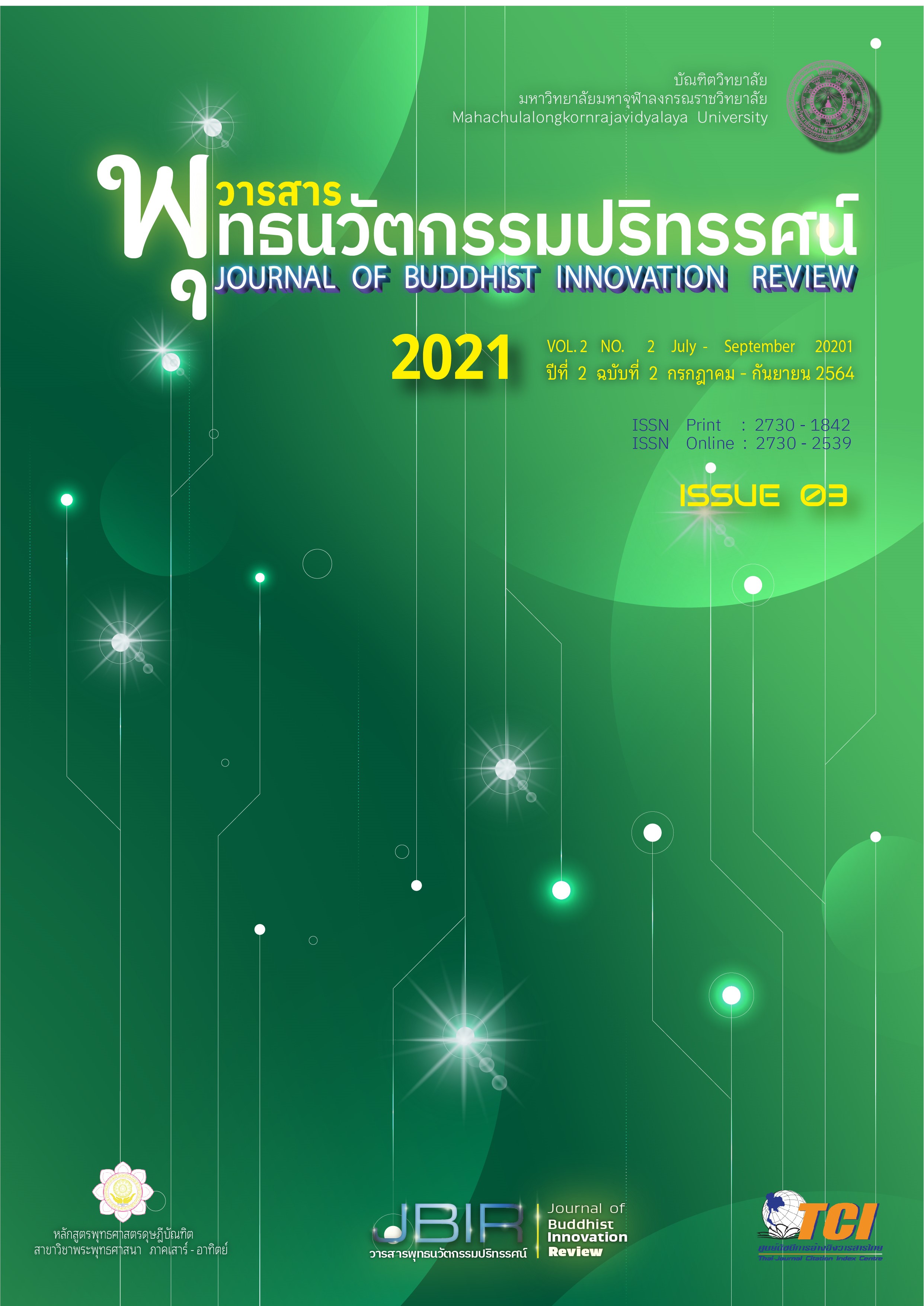BUDDHA TEACHING METHODOLOGY & APPLICATIONS
Main Article Content
Abstract
The Buddha's teaching methods have been proven to help learners achieve their learning goals according to their learning potential. Lesson learned from Buddhist teaching methods is that the Lord Buddha used learners as the center of educative process. There are three crucial components, 1) Understand leaners’ s needs, aptitudes and learning potential. To achieve this goal, teachers need to assess their students’ learning potential. 2) Select the right contents that match the learners’ potential and learning ability, and 3) Apply the right teaching method, approach and media that matches learners’ leaning styles. When teachers integrate these three components in their teaching plan and preparation that align with Buddhist teaching methods, it will enhance the teaching efficiency.
Article Details

This work is licensed under a Creative Commons Attribution-NonCommercial-NoDerivatives 4.0 International License.
เรื่องลิขสิทธิ์/เป็นความคิดเห็นของผู้เขียน
References
เอกสารอ้างอิง
มหาจุฬาลงกรณราชวิทยาลัย.(2539). พระไตรปิฎกภาษาไทย ฉบับมหาจุฬาลงกรณราชวิทยาลัย. กรุงเทพมหานคร: โรงพิมพ์มหาจุฬาลงกรณราชวิทยาลัย.
สมเด็จพระพุทธโฆษาจารย์ (ป. อ. ปยุตฺโต). (2562). พุทธวิธีในการสอน. พิมพ์ครั้งที่ 25. กรุงเทพมหานคร: บริษัท โอ. เอส. พริ้นติ๊ง เฮาส์.
สื่ออิเล็กทรอนิกส์
The University of Kansas. 4 Different Learning Styles You Should Know: The VARK Model. [Online]. Source: https://educationonline.ku.edu (วันที่สืบค้น 2 August 2021)
ชำนาญ เกิดช่อ. บัว 4 เหล่าหรือบัว 3 เหล่า [ออนไลน์]. แหล่งที่มา: http://pbs.mcu.ac.th/ สารนิพนธ์เรื่องบัว-4-เหล่า-หรือ-บัว-3-เหล่า-อ.ชำนาญ- (วันที่สืบค้น 22 สิงหาคม 2564)

